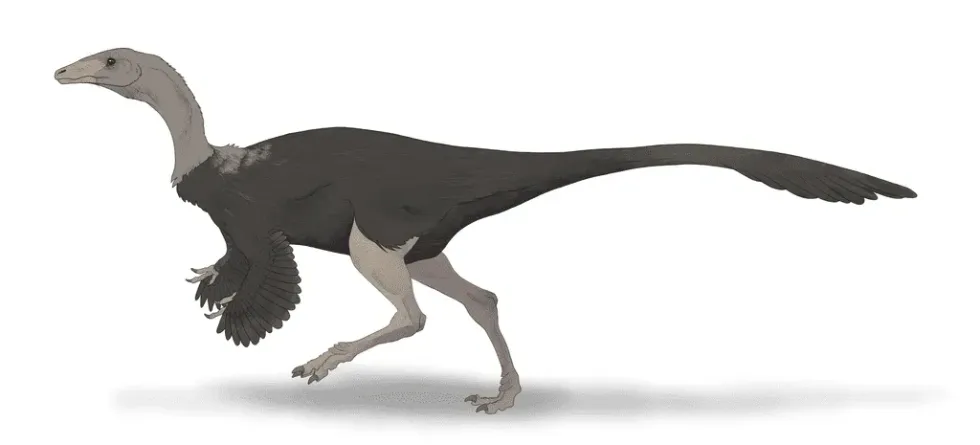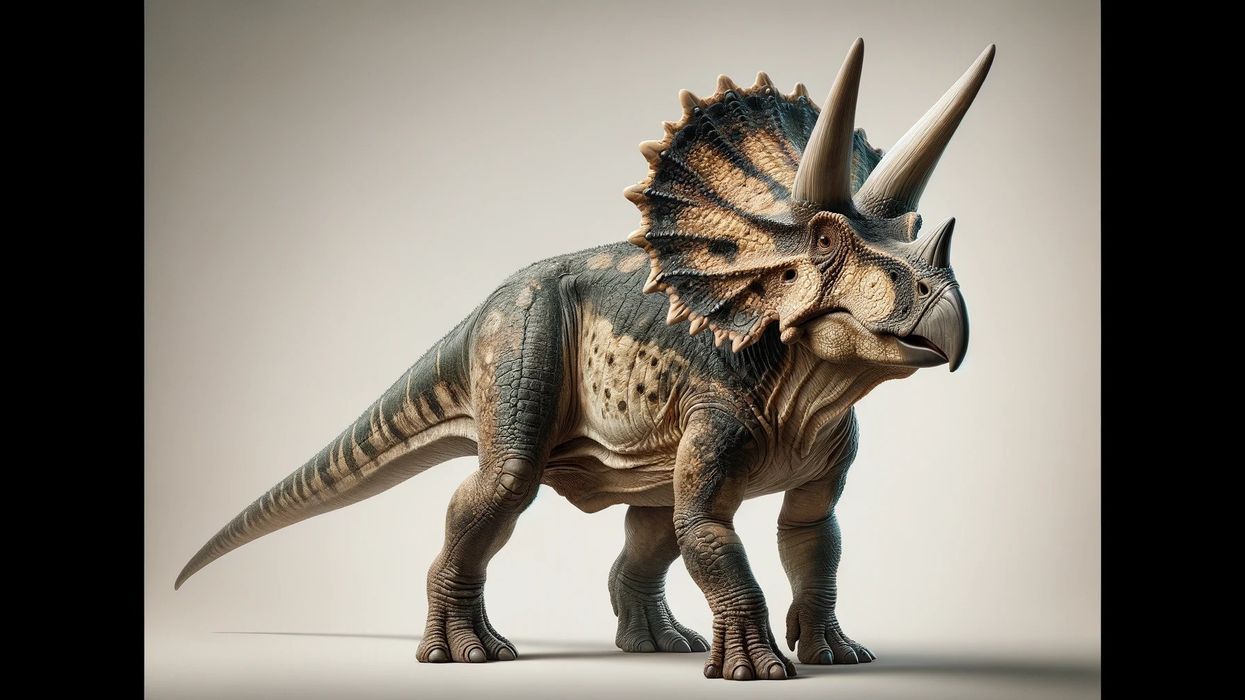'Jurassic World' has always been a fascinating movie to watch, hasn't it? Here we have the Archaeornithomimus, an interesting dinosaur with an amazing history.
The meaning of Archaeornithomimus translates to 'ancient bird mimic'. This is a genus of theropod dinosaur of the ornithomimosaurian type. The fossil remains of this species have been discovered in Inner Mongolia, at the Iren Dabasu Formation.
To date, there hasn't been a complete skeleton derived for this genus.
This dinosaur was not too big, having a moderately built body. From the discovered skeleton, it has been suggested that these dinosaurs were feathered specimens.
There are two species under this genus, Archaeornithomimus asiaticus and A. bissektensis. However, the validity of the second species has often been a topic of debate.
Aren't these facts on the Archaeornithomimus absolutely fun to read? Well, join us to explore other animals, such as the Xenotarsosaurus and the Erectopus!
Archaeornithomimus Interesting Facts
How do you pronounce 'Archaeornithomimus'?
Archaeornithomimus is pronounced as 'Ar-kay-or-nith-oh-mim-us'.
What type of dinosaur was an Archaeornithomimus?
The Archaeornithomimus was a type of ornithomimosaurian theropod dinosaur.
In which geological period did Archaeornithomimus roam the Earth?
It has been said that these dinosaurs lived in times of the Late Cretaceous period.
When did the Archaeornithomimus become extinct?
This ornithomimid dinosaur became extinct about 96 million years ago.
Where did Archaeornithomimus live?
Archaeornithomimus were said to be existing in present-day Asia in the Iren Dabasu Formation.
What was the Archaeornithomimus' habitat?
These members of the Ornithomimidae family preferred terrestrial habitats.
Who did Archaeornithomimus live with?
It is assumed that this species lived in small groups for safety from predators.
How long did an Archaeornithomimus live?
Unfortunately, there is no information available on the lifespan of these Late Cretaceous dinosaurs.
How did they reproduce?
As they were dinosaurs, it is assumed that they would have reproduced by laying eggs, as is the case in other species of dinosaurs.
Archaeornithomimus Fun Facts
What did Archaeornithomimus look like?

This was an ornithomimosaur of medium size. Evidence from research made on other ornithomimosaurian relatives has implied that the Archaeornithomimus was actually a feathered specimen, possessing a keratinous beak and ratite-like feathers.
The hindlimbs of the Archaeornithomimus were quite robustly built. The foot was concluded not to be Arctometatarsalian, as the third metatarsal was not pinched towards the upper end. The cervical vertebrae of this specimen are pneumatized with quite complex internal chambers across the centrum and even the neural arches.
This suggested the presence of cervical air sacs in the body. The anterior dorsal also featured some degree of pneumaticity, along with a few caudal vertebrae. The sacral vertebrae, on the other hand, are noticeably apneumatic.
How many bones did an Archaeornithomimus have?
There is no total count on the bones that Archaeornithomimus had.
How did they communicate?
Unfortunately, there is insufficient information on these dinosaurs of the Late Cretaceous period.
How big was the Archaeornithomimus?
The Archaeornithomimus grew to a length of about 11 ft (3.4 m). This equals about five times the size of Wannanosaurus yansiensis.
How fast could an Archaeornithomimus move?
Unfortunately, we are not aware of the speed of these members of the Ornithomimus family.
How much did an Archaeornithomimus weigh?
From the Archaeornithomimus skeleton, it has been estimated that this Ornithomimus member weighed between 99-201 lb (45-91 kg).
What were the male and female names of the species?
There are no sex-specific names for these dinosaurs.
What would you call a baby Archaeornithomimus?
You can call a baby dinosaur a hatchling.
What did they eat?
Not much is known about the Archaeornithomimus' diet, however, it is assumed that these dinosaurs were omnivores.
How aggressive were they?
Not much content is available on the way of life of this Cretaceous specimen, though due to their comparatively small size, it is safe to assume they were not very aggressive.
Did you know...
In the year 2001, Bruce Rothschild and some other paleontologists carried out a study on 229 foot bones that were referred to the Archaeornithomimus. The study was to analyze and examine any possible signs of a stress fracture. However, none were found.
Gilmore did not assign any holotype specimen for this specimen. In 1990, Peter Galton and David Smith later chose the AMNH 6565 specimen, a foot, as this species’ lectotype based on the initial comprehensive description of the dinosaur fossils.
These fossils were discovered in the Mongolian Iren Dabasu Formation, dating back to the Cenomanian age (which was roughly around 95.8 million years ago).
Foot bones derived from the Early Cretaceous Arundel Formation from the State of Maryland (USA) were referred to as Allosaurus medius by American professor Othniel Charles Marsh in the year 1888.
Following this, in 1911, American paleontologist Richard Swann Lull named these specimens as a separate new species of the Dryptosaurus genus - the Dryptosaurus grandis. However, in 1920, Charles Gilmore renamed the specimens again to a new species of the Ornithomimus genus.
Since this genus already had Ornithomimus grandis as a member, the new species was renamed Ornithomimus affinis. Dale Russell, in 1972, renamed this specimen of Archaeornithomimus as Archaeornithomimus affinis.
A few debates have been made about the true origin of this species. In the year 1990, Galton and Smith arrived at a conclusion that the fossil remains which were unearthed were actually of a small theropod, and were not of ornithomimosaurian origin.
The year 1995 saw a new third species introduced in the Archaeornithomimus. This new species was the Archaeornithomimus bissektensis, which was named by Lev A. Nesov.
This new species was based on the N 479/12457 holotype - metatarsals and femur collected from a juvenile. This holotype was found in Uzbekistan, in the Bissekty Formation, and is said to date back all the way to the Turonian-Coniacian period. However, the affinity of this third species is often under critical supervision.
Why are they called Archaeornithomimus?
The meaning of Archaeornithomimus translates to ‘ancient bird mimic’.
The American Museum of Natural History carried out an expedition under Roy Chapman Andrews in 1923 to regions of Inner Mongolia. In this expedition, Peter Kaisen came across multiple theropods remains in three different quarries.
These remains mainly consisted of largely disarticulated remains of many individuals. The material of the lower jaws and skull was lacking.
Based on these, they were named and described by American paleontologist Charles Whitney Gilmore in the year 1933 as a new Ornithomimus species, Ornithomimus asiaticus. The specific name of this specimen was a reference to its Asian provenance.
In 1972, American-Canadian geologist and paleontologist, Dale Russell placed the Ornithomimus asiaticus in a new genus called the Archaeornithomimus, renaming it Archaeornithomimus asiaticus and making it the type species of this genus.
The generic name of this dinosaur genus combines the prior name Ornithomimus with an additional Greek term, archaios, which translates to ‘ancient’. This was because Russell claimed that the layers in which the Archaeornithomimus specimen was unearthed apparently dated all the way to the Cenomanian-Turonian ages.
This goes roughly 95 million years ago, thus making this type of species one of the oldest ornithomimids known by then.
How many specimens of Archaeornithomimus were discovered?
Only two species were discovered under the Archaeornithomimus - Archaeornithomimus asiaticus and Archaeornithomimus bissektensis.
Here at Kidadl, we have carefully created lots of interesting family-friendly dinosaur facts for everyone to discover! For more relatable content, check out these Atrociraptor facts and Streptospondylus facts for kids.
You can even occupy yourself at home by coloring in one of our free printable Archaeornithomimus coloring pages.
Main image by Audrey M. Horn.
Second image by Gary Todd.









